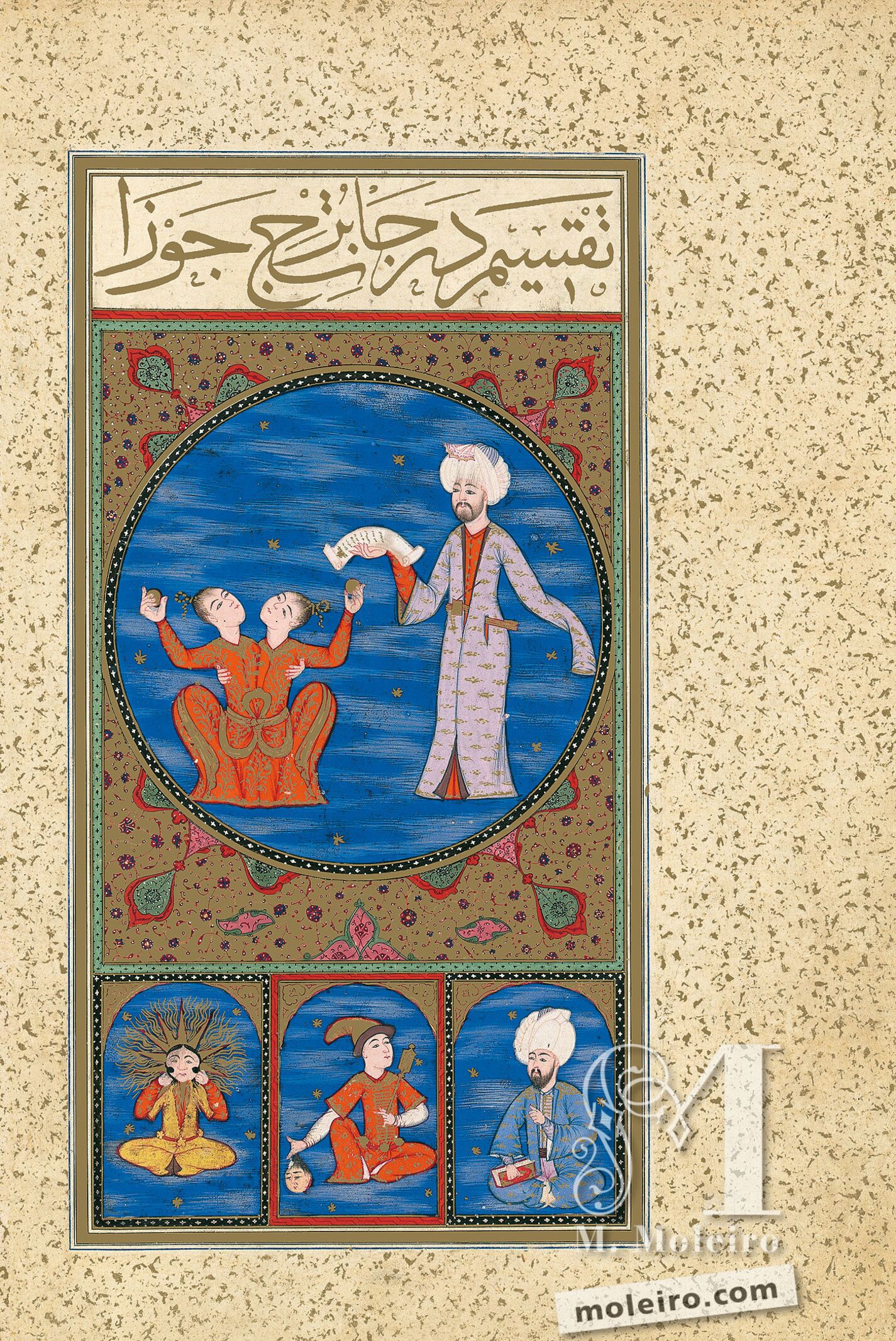The zodiacal sign of Gemini is rarely illustrated in Islamic art as two separate identical figures, the most common iconography being that of Siamese twins separated only from their neck up. Here, the twins sit facing forward, cross-legged with their knees pointing upwards, wearing large, gold-embroidered, red tunics. The hands of the two raised arms each hold a small round object that probably symbolizes a star in the astronomical constellation of Gemini. The figures hug each other’s waist with their other hands and look at each other with brotherly affection. The planet Mercury looks at the Twins but he is somewhat detached from them, also because he is represented as a slender, tall, standing figure that dominates the seated sign. Mercury wears a long coat with exceedingly long sleeves, a red under-tunic and a large turban topped by a floating end. He holds the usual scroll of a scribe in his right hand and, curiously enough, what is in all likelihood a metal pen and ink box protrudes from both sides of his pocket with a reed pen extending diagonally from the inkwell.
The planetary lords of the decades are Jupiter, a bearded man with a large turban possibly reciting Koranic verses or poetry from the book he holds on his knee; Mars holding a mace and a severed head; and the Sun.
Stefano Carboni
The Metropolitan Museum of Art
Curatorial Assistant in Islamic Art
(Fragment of the Book of Felicity commentary volume)

The zodiacal sign of Gemini is rarely illustrated in Islamic art as two separate identical figures, the most common iconography being that of Siamese twins separated only from their neck up. Here, the twins sit facing forward, cross-legged with their knees pointing upwards, wearing large, gold-embroidered, red tunics. The hands of the two raised arms each hold a small round object that probably symbolizes a star in the astronomical constellation of Gemini. The figures hug each other’s waist with their other hands and look at each other with brotherly affection. The planet Mercury looks at the Twins but he is somewhat detached from them, also because he is represented as a slender, tall, standing figure that dominates the seated sign. Mercury wears a long coat with exceedingly long sleeves, a red under-tunic and a large turban topped by a floating end. He holds the usual scroll of a scribe in his right hand and, curiously enough, what is in all likelihood a metal pen and ink box protrudes from both sides of his pocket with a reed pen extending diagonally from the inkwell.
The planetary lords of the decades are Jupiter, a bearded man with a large turban possibly reciting Koranic verses or poetry from the book he holds on his knee; Mars holding a mace and a severed head; and the Sun.
Stefano Carboni
The Metropolitan Museum of Art
Curatorial Assistant in Islamic Art
(Fragment of the Book of Felicity commentary volume)